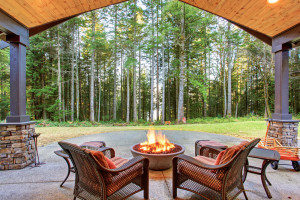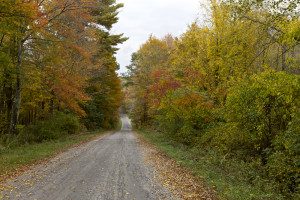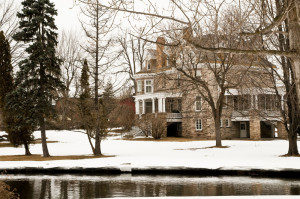The city of Norwich, Connecticut, also known as “The Rose of New England”, was founded in 1659 by settlers from Saybrook. The land was purchased from Chief Uncas of the “Mohegan Native American Tribe”. This Native American tribe originated in upstate New York as the Mohegans and later became The Mohegan Tribe after moving into Connecticut.
As one of the first Connecticut cities, Norwich was incorporated in 1784. Textile factories were common, due to the available water supply of the Yantic and Shetucket rivers. Thanks to the ship trading between Boston and New York, Norwich became a prosperous shipping center, due to its convenient location. It was also known as both an agricultural and industrial area. Many of the agricultural areas evolved into to more industrial ways over time.
Notable Natives
Benedict Arnold: Born in Norwich in 1741, Benedict Arnold was an American General during the Revolutionary War. Arnold became possibly the most infamous traitor in United States history after his plan to defer to British military forces was exposed in 1780.
Samuel Huntington: As a signer of the Declaration of Independence, long-time resident of Norwich, Samuel Huntington became the President of the Continental Congress in 1779. Since he obtained this position during the time that the Articles of Confederation were being ratified, many beat-biographers and Connecticut cival groups believe that Huntington was actually the first President of the United States.
Thomas Leffingwell: Built in 1675, a two-room home built by Stephan Backus was purchased and converted into an Inn by Thomas Leffingwell. Known best to locals as the “Leffingwell House Museum”, the house is a modern day tourist staple containing many fine works created by 18th century silversmiths and clock makers. The Inn is said to have also hosted George Washington for breakfast in 1776.
The Rose City Today
The Norwich & Worcester Railroad (still alive today) was constructed from 1835-1840. Today’s Norwich is flourishing and boasts immigrants from French Canada, Cape Verde Islands, Europe, and more. The “Mohegan Native American Tribe” continues to thrive in this area of Connecticut as well. Named after the tribe, Mohegan Park is one of the most popular recreational areas in the city today. With it being the largest park in Norwich, residents and patrons can enjoy the beach, hiking and biking trails, basketball courts, picnicking and grilling, playgrounds, and more. Many events and activities are held here and preservation efforts are constantly made to keep it thriving.
Have you visited one of the many historical venues in Norwich lately? Please share in the box below your experiences and any additional fun facts you may have learned about our fair town!

 When preparing to sell your house, remember there is a reason why some houses sell immediately and others sit on the market for years. When people look at a house they trust their instinct before committing to the purchase, and the bulk of their instinct comes from their first impression. There are a few things you can do to sell your house quickly.
When preparing to sell your house, remember there is a reason why some houses sell immediately and others sit on the market for years. When people look at a house they trust their instinct before committing to the purchase, and the bulk of their instinct comes from their first impression. There are a few things you can do to sell your house quickly. It is no secret that the sun can be damaging to the skin; causing wrinkles, and potentially causing skin cancer. But, we often overlook how impactful the sun can be on internal organs. The heat from the sun and associated dehydration can cause a host of life-threatening health problems. It’s important to learn about what heat can do to your body internally, how to treat it and ultimately, how to prevent it.
It is no secret that the sun can be damaging to the skin; causing wrinkles, and potentially causing skin cancer. But, we often overlook how impactful the sun can be on internal organs. The heat from the sun and associated dehydration can cause a host of life-threatening health problems. It’s important to learn about what heat can do to your body internally, how to treat it and ultimately, how to prevent it. Marriage is far more than the joining of two individuals into one couple. Not only are two people joining their personal lives when they marry, they are also combining their finances and expenses. Many people do not realize it, but getting married prompts many changes to their auto insurance rates?
Marriage is far more than the joining of two individuals into one couple. Not only are two people joining their personal lives when they marry, they are also combining their finances and expenses. Many people do not realize it, but getting married prompts many changes to their auto insurance rates? Summer days lead to cool nights that are perfect for cozying up to a warm fire with your family and friends. The smell of s’mores is in the air, and some of you may even be roasting your marshmallows the old fashioned way – on a stick. There is nothing more relaxing than hearing the crackle of firewood and the sound of laughter as you look up at the stars. There is also nothing more terrifying than a fire that has become unruly or is emitting noxious gasses due to the materials that are being burned.
Summer days lead to cool nights that are perfect for cozying up to a warm fire with your family and friends. The smell of s’mores is in the air, and some of you may even be roasting your marshmallows the old fashioned way – on a stick. There is nothing more relaxing than hearing the crackle of firewood and the sound of laughter as you look up at the stars. There is also nothing more terrifying than a fire that has become unruly or is emitting noxious gasses due to the materials that are being burned. Aggressive dogs pose serious threats to the community and are far more prevalent than one would think. In 2013, one-third of all homeowners’ insurance liability claims paid was due to dog bite claims. Families with “bully breed” dogs, such as pit bulls and Rottweilers may find themselves unable to obtain homeowner’s insurance or having to pay higher premiums as these dogs have higher aggressiveness statistics. Dog attacks can be prevented by appropriate training and raising of the dog. It’s important to understand some key dog-training principles to raise a safe, friendly dog.
Aggressive dogs pose serious threats to the community and are far more prevalent than one would think. In 2013, one-third of all homeowners’ insurance liability claims paid was due to dog bite claims. Families with “bully breed” dogs, such as pit bulls and Rottweilers may find themselves unable to obtain homeowner’s insurance or having to pay higher premiums as these dogs have higher aggressiveness statistics. Dog attacks can be prevented by appropriate training and raising of the dog. It’s important to understand some key dog-training principles to raise a safe, friendly dog. While most people know that homes are required by law to have smoke detectors, which quickly sense smoke in case of a fire and alert the residents to ensure a quick response, fewer know that the law also requires carbon monoxide detectors. That’s because carbon monoxide is a lesser-known danger than fire – but, in some cases, a much more potent one.
While most people know that homes are required by law to have smoke detectors, which quickly sense smoke in case of a fire and alert the residents to ensure a quick response, fewer know that the law also requires carbon monoxide detectors. That’s because carbon monoxide is a lesser-known danger than fire – but, in some cases, a much more potent one. Chances are you couldn’t wait to get your driver’s license when you turned 16. However, you probably never guessed that there would be so many steps you had to take before you could get on the road, or that even after receiving your license, you still have to navigate numerous laws and restrictions until you turn 18. Teen driving may be difficult, but this guide can help clarify a few questions you may have.
Chances are you couldn’t wait to get your driver’s license when you turned 16. However, you probably never guessed that there would be so many steps you had to take before you could get on the road, or that even after receiving your license, you still have to navigate numerous laws and restrictions until you turn 18. Teen driving may be difficult, but this guide can help clarify a few questions you may have. Every fall, while the rest of the country is lamenting the end of summer and dreading the coming of winter, New England is experiencing a uniquely beautiful experience – the gradual shift from summer to fall foliage throughout the region’s forests. This seasonal event brings vibrant hues of red, orange, and yellow to the leaves of trees throughout the state of Connecticut, and because of their widespread nature, the best way to enjoy them is by car. Thankfully, the state is full of scenic routes, all of which become even more beautiful in fall when the leaves change color. This fall, head out for a drive along these top five scenic routes:
Every fall, while the rest of the country is lamenting the end of summer and dreading the coming of winter, New England is experiencing a uniquely beautiful experience – the gradual shift from summer to fall foliage throughout the region’s forests. This seasonal event brings vibrant hues of red, orange, and yellow to the leaves of trees throughout the state of Connecticut, and because of their widespread nature, the best way to enjoy them is by car. Thankfully, the state is full of scenic routes, all of which become even more beautiful in fall when the leaves change color. This fall, head out for a drive along these top five scenic routes: As the days grow shorter and the air grows colder, people around the country experience the telltale signs of the fall season. Along with the approach of the holidays and the changing color of the leaves, however, you can also expect unpredictable weather patterns; from sudden storms to early snowfall. Especially in New England, there is no telling when temperatures may drastically drop – an event that can have significant impacts on your home.
As the days grow shorter and the air grows colder, people around the country experience the telltale signs of the fall season. Along with the approach of the holidays and the changing color of the leaves, however, you can also expect unpredictable weather patterns; from sudden storms to early snowfall. Especially in New England, there is no telling when temperatures may drastically drop – an event that can have significant impacts on your home.